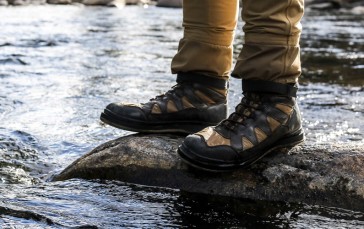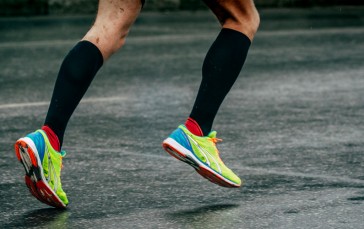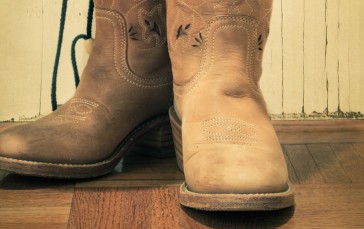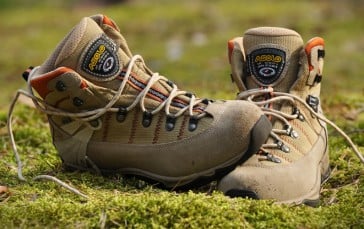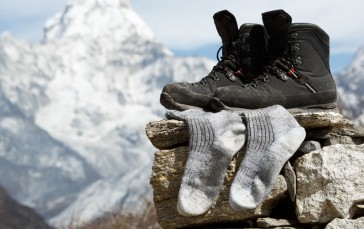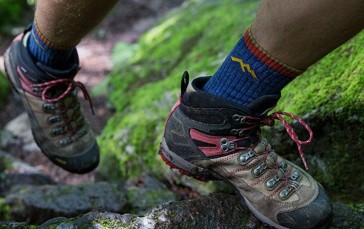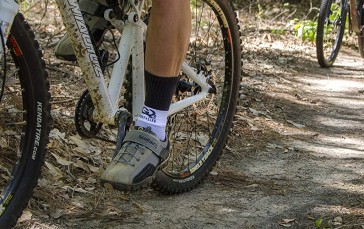Wool Or Cotton Socks For Your Work Boots?
You can have the most splendidly constructed, hyper-insulated, fully waterproof, skid-resistant, steel-toed work boots on the planet but if you’re wearing the wrong socks you’re not going to enjoy all their benefits. For decades it was assumed that standard cotton socks were all a person needed to wear inside their work or waterproof boots but is that really the case? Or is there an argument to be made that wool is actually the smarter choice? Below we’re going to add our two cents to the great sock debate and take a look at the choice between cotton and wool socks.
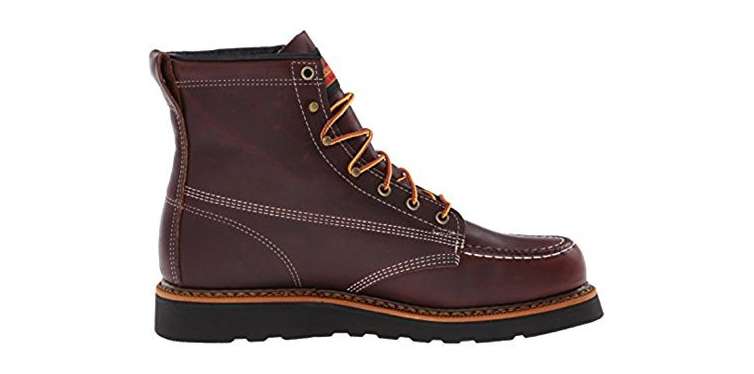
The Players
Cotton – Cotton is a soft, all-natural material that makes for great shirts and for dress socks that feel great when you first put them on. If you work hard, however, it doesn’t take long for those socks to wind up drenched in sweat. In the gym that’s not such a big deal. After all, by the time your socks wind up soaking wet you’re already headed for the shower. On the job, however, you’re going to have to walk around in those wet socks all day. The problem is that cotton absorbs moisture, which is the opposite of what you want for your feet if you’re a hard-working guy or gal.
Wool – Wool has been well-known for centuries as the go-to material for cold weather. That alone may make it seem like a poor choice for hot weather. But one of the reasons wool is such a great cold weather material is that it doesn’t retain moisture. That means that even if you’re sweating under your wool clothes they won’t get all wet and turn into wearable ice cubes like cotton will. They avoid this by pulling (“wicking”) the moisture off your skin and exposing it to the air where it can evaporate. When it comes to work boots then, whether you’re sweating up a storm or you step in a deep puddle on a hot day your wool socks will dry out quickly because of this evaporative ability. The same goes for hiking socks, no matter what the weather is like, they have to dry quickly because you will be walking all day in them.
The Winner – Wool
Wool has it all going on as a sock material. It’s warm when it’s cold out and it wicks sweat away from your feet when it’s hot out. And although wool by itself can sometimes irritate the skin, you can buy wool socks that are blended with synthetic materials that won’t affect their wicking ability and make them feel nice and soft to the touch. Now that we have a winning material let’s take a look at some other things you’ll want consider when buying a pair of work socks.
Things to Look For in Your Socks
You’ve taken a good first step by deciding to buy wool or wool-blend socks to wear with your work boots. Now you need to think about the socks’ other characteristics including height, thickness and overall fit.
- Height – You can buy wool socks in all different heights from no show socks that don’t rise above your ankles to tall enough that they encompass your entire calf. There are 2 primary considerations you’ll want to kick around when determining the height of your new socks; the height of your work boots and the temperature you’ll be working in.
- Height of Your Work Boots: The taller the work boots the taller that socks. This is because if you let the collar of your boots have free and easy access to your skin you’re asking for abrasions, blisters and a very long, uncomfortable day.
- Temperature: Your socks are an important defense mechanism against both cold and heat. That said, the only time you’ll need to consider socks that extend all the way up over the calves is if you plan on working outside in sub-freezing temperatures. The rest of the time any socks that are slightly higher than your boots should be fine.
- Thickness – While in theory the notion of always wearing thick, heavily cushioned socks may seem like a good way to ramp up the comfort that’s not always the case. The fact is different environmental conditions call for different levels of cushioning.
- Hot Weather: When the weather gets hot you’ll want to make sure you’re wearing the thinnest wool or wool-blend socks available with the least cushioning. This will ensure they generate the least sweat and are able to whisk that sweat away quickly and effectively.
- Warm Weather: In the spring and fall you’re going to want socks of medium thickness with light cushioning. These socks still ensure optimum levels of moisture wicking while providing just enough warmth to carry you through those colder than expected days.
- Cold Weather: When the mercury dips into sub-freezing territory it’s time to whip out the thick, heavily cushioned socks in order to maximize both warmth and wicking ability. But be careful: the biggest danger with wearing heavily cushioned socks is the temptation to lace your work boots up tightly to guard against the cold. Doing so however, will suppress the wicking ability of the socks and make for cold, wet feet.
- Fit – Just as important as thickness, height and material is how the socks actually fit on your feet. If they’re too big they’ll bunch up or slide back and forth and create painful blisters. Too small and they can squeeze your feet, generate pressure points and have their moisture wicking abilities compromised. Of course if you’re after a pair of compression socks or hand warmers, they’ll fit fairly tightly in order for them to work. The most important indicator of a proper fit is the alignment of the heel cup. If it fits perfectly over your own heel then the socks are the right size. If the heel cup is down in the arch of your foot the socks are too small and if it’s up around your ankle the socks are too big.

Conclusion
Wearing wool socks with your work boots is the smart thing to do. If you work outdoors where the weather conditions are constantly changing you’d be wise to stock up on different pairs of wool socks that demonstrate different characteristics of height and thickness. This will ensure your feet are always warm, dry and comfortable.


